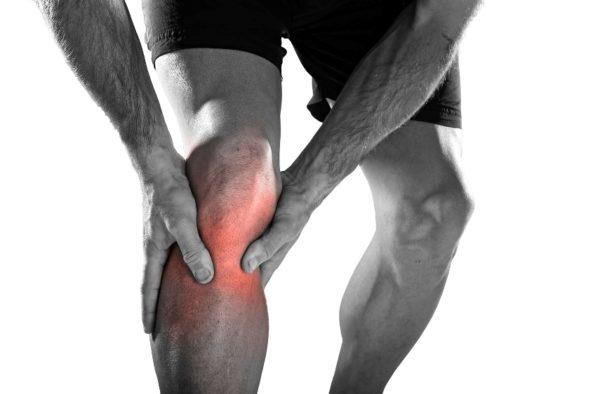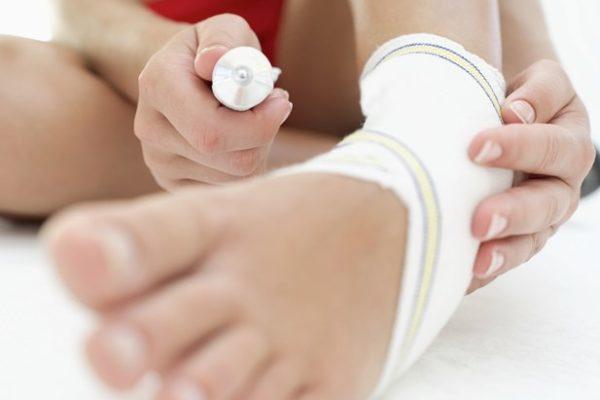As training heats up for the Grand Forks Wild Hog Marathon, it’s important for runners, both new and seasoned, to understand the potential injuries associated with this sport and how best to prevent and treat them. Unlike contact sports, running involves you, your shoes and the ground. Unfortunately, that lack of equipment and control can lead to injuries and pain from over-use, improper form or footwear and the surfaces you run on. Some of the most common injuries seen include the following.
Iliotibial Band Syndrome
Commonly caused by over-use of the legs in runners, iliotibial band syndrome affects the band of fibrous tissue along the side of the thigh that provides stability to the knee and hip. When the condition occurs, you may experience that the band rubs against the hip or knee bone each time either are used. This can cause pain on the outside of the knee or hip that is especially noticeable as you begin activity. Pain tends to decrease as your body warms up, or when you are at rest.
Prevention & Treatment
Follow a proper training program that includes rest days and cross-training. Take part in cross-training activities that focus on the upper body or movements that are side to side, like jumping jacks, to give the band a rest. If your pain becomes more severe, seek care at Altru Advanced Orthopedics. We may recommend physical therapy, medications or injections.

Patellofemoral Pain Syndrome
Another condition often associated with over-use is patellofemoral pain syndrome. Most commonly seen in young adults, it is associated with pain around the kneecap. It’s often referred to as “runner’s knee” as it’s common in the sport, but, it can be associated with other activities, and even in those who are not active. Beyond overuse, kneecap alignment issues can also cause patellofemoral pain syndrome.
Prevention & Treatment
This condition is very common, even in non-athletes, and can be managed fairly conservatively. Self-care might include rest, reduction in activity level or strengthening exercises. For those training for a marathon or longer race, I recommend quadricep strengthening exercises, cross-training such as cycling if it doesn’t bother the knee, or reduced mileage or a modified running routine with more cross-training built in. prevent the pain associated with this condition, ensure you have the proper running shoes for your needs, try running on softer surfaces (i.e. a track or a road, where safe), and consider custom orthotics.

Stress Fractures
Stress fractures in the tibia, the largest of the two bones in the lower leg, are very common in distance runners. Stress fractures are caused when the muscle surrounding the bone contracts for a long period of time, causing stress on the bone as the body relies on it more. A change in training surface can make you more susceptible to a stress fracture, as your body gets fatigued more quickly as it adapts to the change. Symptoms of a stress fracture including pain in the lower leg, which might be accompanied by swelling or tenderness.
Prevention & Treatment
The best way to prevent stress fractures is to utilize proper form & footwear. Take advantage of a gait analysis at the Sanny & Jerry Ryan Center for Prevention & Genetics, where a physical therapist will analyze your running mechanics and provide recommendations. They will also guide you to the best style of shoe for your unique needs. Strengthening your calf muscles can also help in prevention.
Though X-rays cannot always initially detect stress fractures, together we can assess your injury and develop a plan to get you back to training. Unfortunately, you’ll typically have to avoid running and similar activities for around eight weeks. This is a good time to build core muscles and focus on cross-training activities, such as swimming, that don’t cause pain or further injury.
Running injuries are best avoided by ensuring you are fully prepared for each run, that you are training properly and not over-exerting yourself. Take advantage of free training plans, include cross-training in your routine, and mind your distance. Though it might be tempting to push through the extra mile on a long run, an injury that sidelines you from the race you are training for is not worth it.
When determining whether or not to seek medical care for your pain or injury, consider its severity. Soreness is normal when pushing yourself in sport, but if your pain is distracting or interfering with your activity, or if it’s accompanied by swelling, it’s time to pay us a visit.







